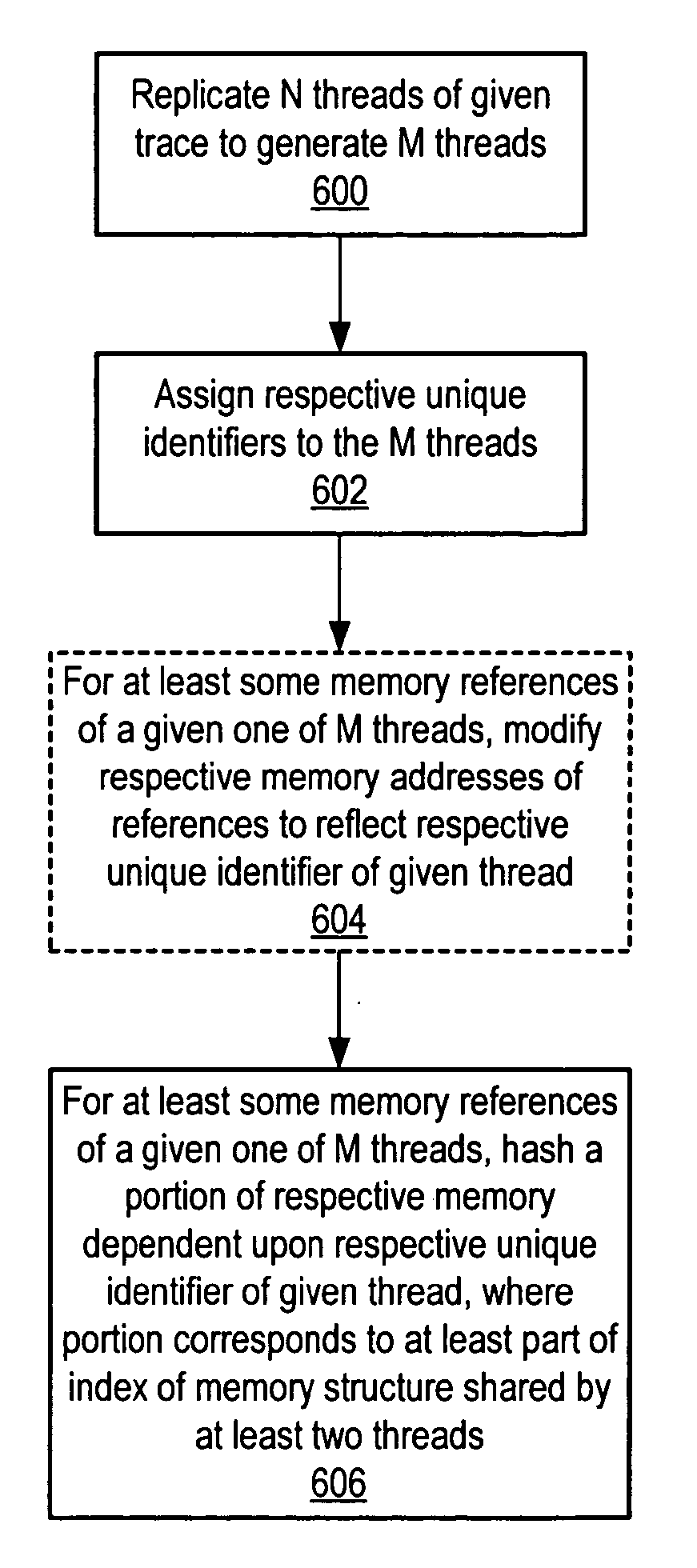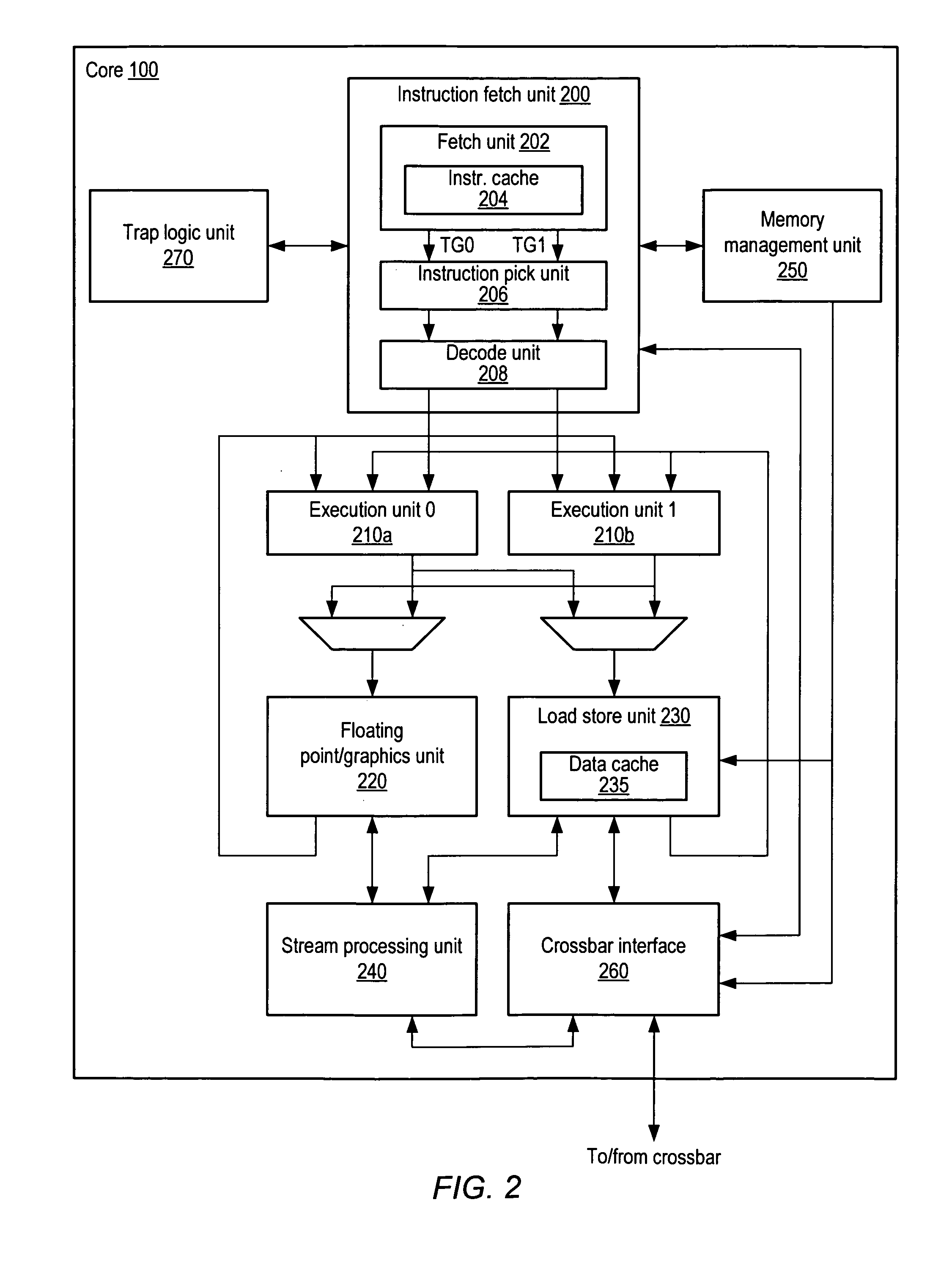Method and system for trace generation using memory index hashing
a memory index and trace generation technology, applied in the direction of instruments, digital computers, computation using denominational number representation, etc., can solve the problems of significant differences in the effect of processor performance and design complexity, the impact of simulation on the design complexity, and the overstatement of important design effects under a full workload
- Summary
- Abstract
- Description
- Claims
- Application Information
AI Technical Summary
Problems solved by technology
Method used
Image
Examples
Embodiment Construction
Introduction
[0019] In the following discussion, an embodiment of a multithreaded processor and its various features are first discussed in detail. Subsequently, simulation and modeling techniques that may be employed in the design of such a processor are discussed, followed by a description of various techniques for generation of instruction traces for use in such simulation. The technique of generating an extended trace from another trace through thread replication is introduced, and the problem of artifacts resulting from such replication is described. Finally, a method for mitigating such artifacts and a system for executing such a technique are discussed.
Overview of Multithreaded Processor Architecture
[0020] A block diagram illustrating one embodiment of a multithreaded processor 10 is shown in FIG. 1. In the illustrated embodiment, processor 10 includes a plurality of processor cores 100a-h, which are also designated “core 0” though “core 7”. Each of cores 100 is coupled t...
PUM
 Login to View More
Login to View More Abstract
Description
Claims
Application Information
 Login to View More
Login to View More - R&D
- Intellectual Property
- Life Sciences
- Materials
- Tech Scout
- Unparalleled Data Quality
- Higher Quality Content
- 60% Fewer Hallucinations
Browse by: Latest US Patents, China's latest patents, Technical Efficacy Thesaurus, Application Domain, Technology Topic, Popular Technical Reports.
© 2025 PatSnap. All rights reserved.Legal|Privacy policy|Modern Slavery Act Transparency Statement|Sitemap|About US| Contact US: help@patsnap.com



